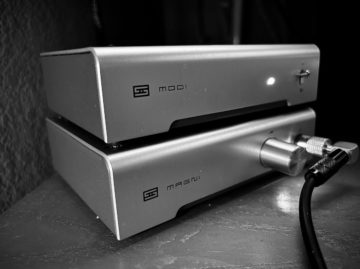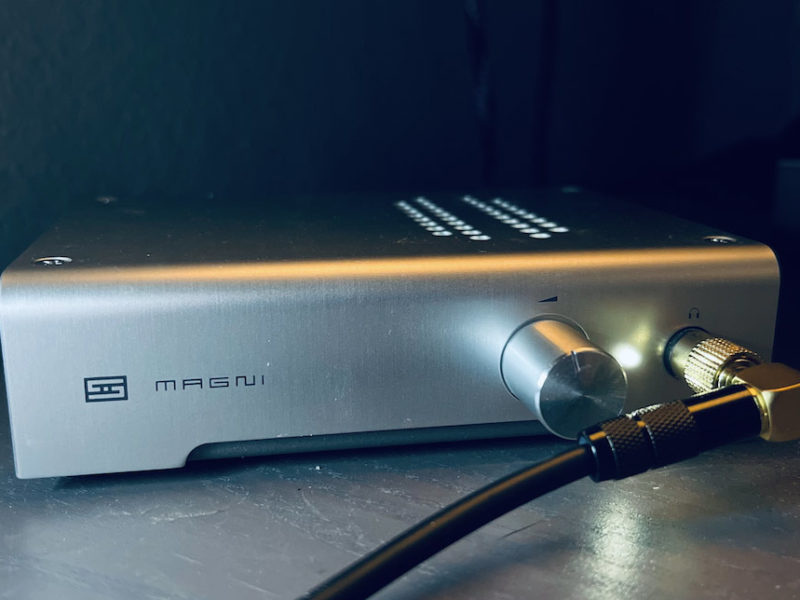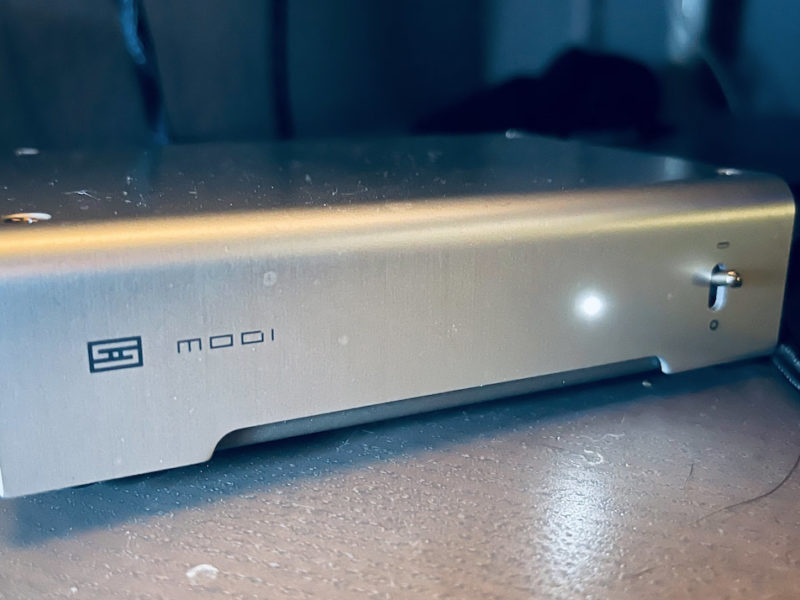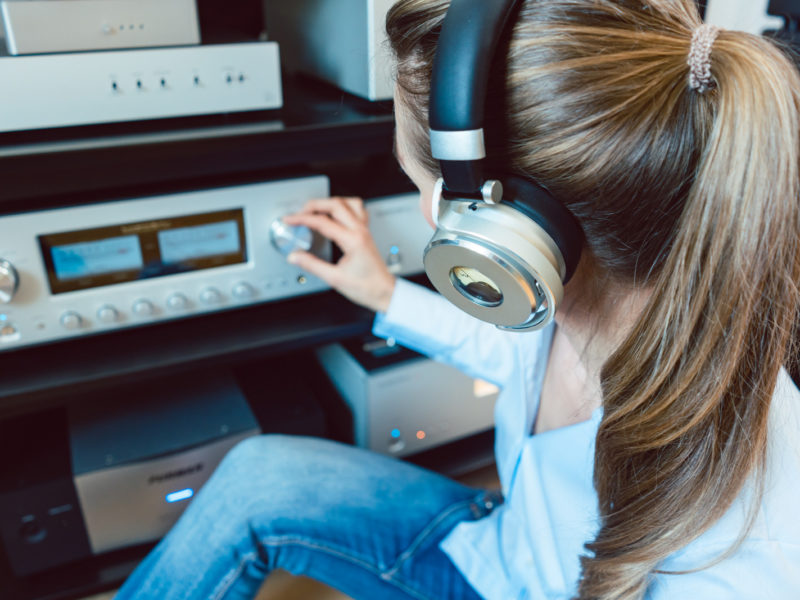How to Charge AirPods Without a Case
Discover the truth about how to charge AirPods without a case. Uncover myths, find alternatives, and safeguard your audio experience.

Great headphones can help you immerse yourself in your music. But what if you plug your headphones into your smartphone or computer, and something isn’t right? Maybe you’ve maxed out the volume but the music still doesn’t have the oomph you were looking for. Maybe you’re hearing clicks or distortion when you crank it up. What can you do?
There are many solutions to improve the sound quality coming out of your device. You might think there are too many, because it can be confusing to find the right product. A high quality headphone amp can be one of those solutions, and so can Digital to Analog Converters (DACs).
But what is the difference? And most of all, which solution is the right one for you?
Simply put, DACs convert digital data to an analog signal and an amp takes that signal and makes it louder.
Amp is short for amplifier, and it’s called that because it amplifies the volume of an audio signal. There are many types of amps, such as the ones used to make that booming bass in that car that just cut you off, or the ones used to make those electric guitars go to 11. You can also use an amp as a turntable receiver. A headphone amp will do the same job, so just be careful not to blow out your ears when you turn it up.
On the other hand, DACs convert digital data to an analog signal. Ask yourself this: what does computer code sound like? Maybe you heard some clicks and beeps in your head, but most of us can’t hear computer code. A DAC, on the other hand, can understand and translate that computer code into an audio signal that our analog ears can hear.
It is also worthwhile to note that your devices, such as smartphones and computers, already have amps and DACs right inside. If they didn’t, you wouldn’t be able to connect headphones and hear sounds.
So if your phone already has an amp and DAC built in, why would you need another one? And which product is the right product for your particular setup?
Figuring out which solution you need starts with understanding which problem you’re having.
If you’ve cranked up the volume on your device and it still isn’t getting loud enough for you, an amp might be the solution. Just be sure that you have your headphones connected securely and you’ve checked the settings on your playback app before you go purchase another pricey headphone amp. Again, watch out for your ears when you’re cranking up that volume!
On the other hand, maybe your device does get loud enough, but when you raise the volume you hear unwanted noise. This noise could consist of cracks or hiss or hum or distortion. None of those sound good with your music.
Again, check your connections and app settings. But if these issues still persist, then it’s time to look at a good DAC to play back your digital files.

The Schitt Magni amp
If you’ve checked your connections and your app and you’ve decided that you need an amp, there are a few more factors to consider.
First, you can rule out buying an amp if you have bluetooth headphones. Bluetooth headphones come with amps built in, so buying another amp won’t help you. If you’re having an issue with Bluetooth headphones, the best next step is to reach out to the manufacturer.
Second, there is a more technical way to make sure you need an amp before you make that purchase. Check the specs of your headphones and you’ll see a spec called impedance. Basically, it’s the resistance that your sound system puts up to incoming sound. Impedance is measured in funny little units called ohms.
If your headphones have an impedance spec that is over 32 ohms, you will need an amp. If not, there may be some other issue with your setup. Another technical spec that can come into play is sensitivity. There is no defined level for sensitivity like there is with impedance. Just note that headphones with higher sensitivity may be easier to turn up, but there may also be unwanted noise that comes along with it.
Another thing to consider about amps is that they will take up space on your desk or shelf. Also, they will require an additional 3.5mm cable to connect your device to the amp. You’ll be plugging your headphones into the amp instead of your phone or computer.
Now that you know that you need an amp, it’s time to decide what to buy. A simple search on Amazon shows headphone amplifiers listed from $25 to over $300. And that is just for dedicated headphone amplifiers. Amps that have other connections and can power speakers can range up to over $1000. So how much do you need to spend?
The good news is, if you’re just looking for volume for your headphones, there are a number of affordable options. Just keep in mind that, in general, you get what you pay for. The higher quality amps will have better construction and give you better control over the sound coming into your headphones.
The other thing to keep in mind is that lower quality amps may make your sound louder, but they may also add noise to your audio. This is because of the cheaper components used in them. It can pay off to do a little research and buy a quality amp.
So far, the amps we’ve been discussing will only power headphones. If you’re looking to power speakers as well, you’ll be paying much more for your amp. These units are much larger than a headphone amp as well, so take your space into account. Also, many of these amps will have DACs built in, so just be aware that you won’t have to purchase one separately. In addition there are units called receivers, but we’ll talk more about those later.
For most situations, you won’t have to break the bank to buy an amp. Audiophiles will want the best components they can buy, but not everyone has the desire or the funds to purchase them. There are plenty of reasonable options for amps, so find one in your price range that has the features you need.

The Schitt Modi DAC
If you think that you need a DAC, you’d do well to check your current setup first. Make sure your headphones are connected securely and your digital playback settings are set correctly on your device. Digital music files can have different playback and bit rates, so that might be the cause of your issue. But if you know that your connections are good and that your device is working properly, now might be the time to buy a DAC.
Unlike an amp, there’s no specific technical spec like impedance or sensitivity that we use to double check that a DAC is needed. Rather, you will check it with your ears. If you hear digital distortion or clicking, it’s time to try a DAC.
DACs are a little different from amplifiers in that many folks will never purchase a stand-alone DAC. A search on Amazon only returns a few dedicated DAC units, around the $130 to $200 range. Some of these DAC units come with amps built in, and many of them are meant expressly for use with headphones.
The reason why there are not as many DAC stand-alone units is because they are not as necessary anymore. The DACs in modern computers and smartphones are usually capable of playing back music without noticeable issues. The only reason you would shop for a stand-alone DAC is if you are having playback issues from your device, or if you are on a quest to produce the highest reproduction of your music.
Again, audiophiles who want to control every aspect of their signal chain may buy a dedicated DAC, but, for most of us, modern devices will do the trick.

Using headphones with a receiver
Receivers are the hub of many home audio (and home theater) systems. Most receivers will accept audio inputs from a number of different sources, including turntables and CD players and smartphones. Receivers differ from amps in that receivers will have an AM/FM tuner built into the unit. But all receivers have amps and most have headphone outputs, so you could technically use a receiver as a headphone amp if you so chose.
Just keep in mind that receivers have additional connections and other features built in (especially if it is meant for home theater) so these units will be much bulkier than a dedicated headphone amp. Also, many receivers only accept analog signals, so they will not be a solution if you need a DAC.
Also, you’d have to plug your device into the receiver through a 3.5 mm cable, just like an amp. Then you’d have to plug your headphones (or speakers) into the receiver to hear the audio. Unless you have an old receiver lying around and have the space to set it up, you’d be better off going with a dedicated headphone amp in most cases.
Amps and DACs are integral parts of your audio chain. Amps make sounds louder, while DACs convert digital data to analog sound.
If you are looking for a solution for your headphone audio, your best bet may be to buy a dedicated headphone amp that has a DAC already onboard.